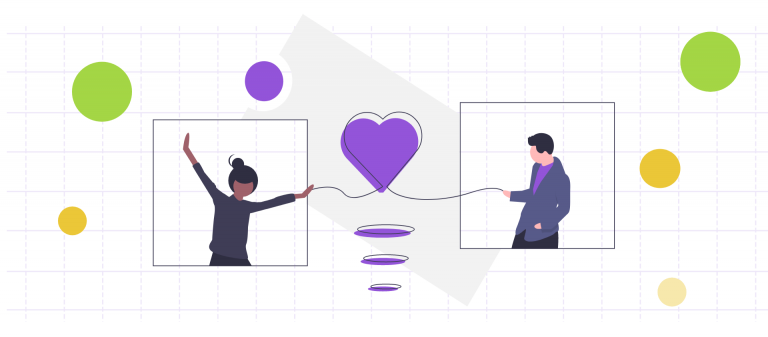3 Reasons to Regularly Re-Qualify Your Donors and Prospects

Donor qualification is an integral part of any effective major gift fundraising program.
Most nonprofits that actively work to identify and steward major donors understand this and take steps to qualify their prospects based on pre-established criteria. However, they might not realize that by only qualifying donors once, they might not be reaching their full fundraising potential.
Your major donor program represents an important investment for your organization. Taking steps to maximize its performance will safeguard all the hard work, time, and resources you’ve already put into it. So, whether you have a full development team of seasoned pros or are just getting started with prospect research and stewardship, it pays to understand the ins and outs of donor qualification and the importance of re-qualification.
If this is a new undertaking for your team, we’ll walk through the fundamentals. From there, we’ll explore three reasons donor re-qualification should be a key part of your development approach if it isn’t yet.
What is donor qualification?
Donor qualification is the process of assessing your major donors and prospects to determine who is most worth your team’s attention for further relationship-building.
Qualification helps you better understand how donors feel about your organization, their capacity for giving, and what the next steps in the moves management process should be. Nonprofit organizations, colleges, and universities, grateful patient programs at healthcare institutions—any organization that relies on large gifts from donors benefits from having intentional qualification processes.
Qualification is accomplished by learning more from donors and prospects about their interests, feelings toward giving, changes in their life, and more. By having one-on-one meetings and check-ins with these individuals, you take small steps toward deepening your relationships and their connection to your organization.
Along with relationship-building, the qualification serves another important purpose; it’s essentially an exercise in resource allocation. After all, major gift fundraising is a time- and labor-intensive process, so knowing where you stand with each donor and prospect is essential for prioritizing and focusing your team’s attention.
What is donor re-qualification?
Re-qualification entails making donor qualification an ongoing activity rather than just something you do once or twice with a donor at the beginning of the relationship. Qualifying questions during one-on-one meetings and touchpoints should be standard, recurring parts of your overall moves management cycle.
Why? Because donors’ and prospects’ lives change. You wouldn’t ask a donor how things are going and why they support your work once and then assume their answers will never change.
Especially in a turbulent economy, it’s important to reinforce your relationships with plenty of communication. Here are a few tried-and-true questions to ask that can help you stay aware of changes in donors’ lives, their current giving capacity, and their motivations for giving:
- How have you and your family fared in the past year?
- Where does our organization fall within your philanthropic priorities?
- What are your plans for the holidays/summer/etc.?
- What have you been doing in your free time lately?
The re-qualification process can also involve regularly rescreening your donor and prospect lists to check for changes in wealth indicators. This strengthens your overall portfolio management process and allows you to ensure individuals are sorted into the proper stewardship and communication cadences at any given time.
Why should you regularly re-qualify donors and prospects?
Although the concept of re-qualification is intuitive, you rely on the generosity of donors, so it makes sense to stay in contact and keep a pulse on the relationship—many nonprofits may not currently prioritize it. In many cases, especially for growing organizations with small (or no dedicated) development teams, there’s a perceived lack of time for frequent stewardship activities outside of building up to a solicitation.
But when made into a habit, re-qualification can take your development activities to the next level. Let’s take a deeper dive into why it should be a priority:
1. Accuracy and Efficiency
As mentioned above, regularly qualifying and staying in touch with your donors and prospects allows you to fundraise much more efficiently and reduce wasted time.
On the other hand, long qualification cycles in which you only rescreen your lists every couple of years and make an effort to reconnect with donors leading up to a campaign can be harmful. They can easily become a drain on your resources and cause you to lose out on valuable opportunities.
For example, if you acquire a new recurring donor at a lower level who is actually a strong prospect for mid-level or major giving but isn’t identified, it can be difficult to go back and initiate a stewardship cycle after they’ve already been giving at the same level for years without much personal attention. Alternately, your team may spend time pursuing a prospect who was initially identified as strong but has in fact stopped engaging with your nonprofit’s messages or has experienced life changes that would make them less receptive to a major gift solicitation.
The key is frequency. By more frequently qualifying, talking to, and segmenting your donors and prospects (and of course keeping your data organized and useful along the way), you’ll ultimately save time and resources. This frees your frontline fundraisers to focus on the individuals who are the most likely to drive the most impact at that particular time.
2. Stronger Relationships
Re-qualification cadences also strengthen your relationships with donors and prospects over time, building stronger bonds between them and your organization and priming them for future engagement.
You can ask increasingly effective questions as you gain a more up-to-date understanding of your donor’s lives, employment, giving habits, hobbies, and much more. And by providing more personalized stewardship experiences, you can point donors toward the opportunities that best suit them as individuals and will best benefit your nonprofit.
Depending on the circumstances, these opportunities might include:
- Giving a larger gift to your next campaign
- Participating in an upcoming feasibility study
- Giving a mid-level gift for the first time
- Disbursing a gift through a donor-advised fund
- Serving as a board member or community ambassador
- Creating a planned gift
- Setting up a monthly recurring donation
This kind of personalization, enabled by frequent one-on-one touchpoints, helps everything about the relationship feel more organic, and it can prevent major surprises or disappointments as conditions change over time.
Work Smarter and Engage More Donors with Keela Automation
With Keela Automation, you can automatically send emails to the right donors at the right time. Sending timely emails is key to engaging your donors effectively.
Want to give it a try?
3. Improved Internal Processes
With increased frequency and activity comes a clearer vision of what’s working well and what can be improved in your current development approach. Regular and intentional re-qualification can help to keep your entire qualification process robust and adaptable, plus it fosters a deeper culture of continuous discovery and improvement in your fundraising.
As you ramp up your donor and prospect conversations and see them through to new outcomes, note trends in the performance of your strategies and cadences over time. You’ll likely find several ways to improve. For example, you may find that you want or need to:
- Adjust the specific discovery touchpoints or the number of touchpoints you employ with new prospects.
- Redefine your qualification and disqualification parameters at different giving levels.
- Expand your screening processes to include a broader range of prospecting indicators.
- Update or even overhaul your data management processes with improved workflows, reporting protocols, or technology upgrades.
The bottom line: Actively thinking about the nature, frequency, and depth of your qualification cycles is a surefire way to ensure these efforts can continually improve—and drive more impact for your mission.
Although nonprofit development, prospecting, and donor stewardship are time- and labor-intensive work, there’s a reason why they’re such top priorities for many organizations. These tasks can deliver incredible returns when executed well and when steps are taken to ensure your team can complete them efficiently.
Donor qualification is an integral part of this important work, and by making it an ongoing part of your normal development efforts, you’re sure to see improvements on several fronts: donor relationships, fundraising efficiency, and donation revenue.
.svg)



